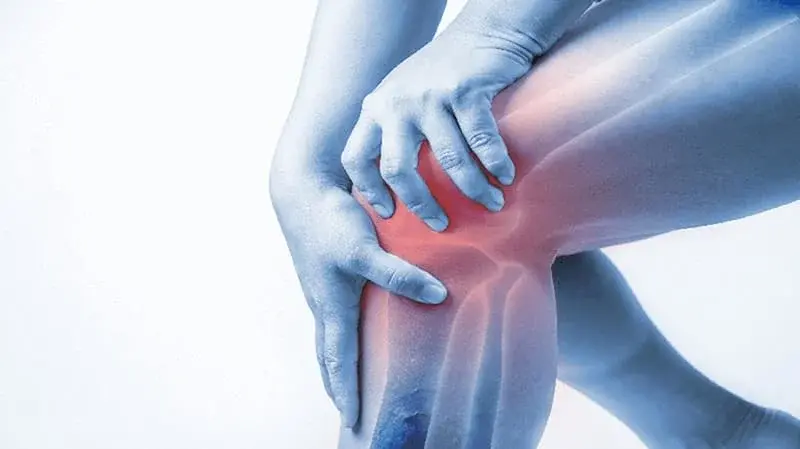When we think of joint pain or arthritis, it’s usually associated with older adults. However, joint damage can begin long before you hit your 60s or even your 50s. In fact, many people unknowingly start weakening their joints in their 20s and 30s through daily habits that seem harmless. These subtle habits often go unnoticed until discomfort or stiffness sets in—and by that point, some damage may already be done. Understanding how your lifestyle choices affect your joint health is essential if you want to stay mobile and pain-free in the long run. Here are 10 common habits that may be silently damaging your joints before you even turn 40.
1. Sitting for Long Periods
Spending most of your day sitting—whether at a desk, in a car, or on the couch—can cause your joints to stiffen and weaken over time. Prolonged sitting leads to poor circulation, tight hip flexors, and weakened gluteal muscles, which together place extra stress on your knees and lower back. Over time, this imbalance can cause discomfort and increase the risk of joint degeneration.
2. Skipping Warm-Ups and Cool-Downs
Jumping straight into an intense workout without warming up is one of the fastest ways to stress your joints. Similarly, finishing a workout and walking away without stretching deprives your body of the recovery it needs. Without proper preparation and recovery, your muscles remain tight, reducing your joints’ flexibility and increasing your risk of injury. Always dedicate a few minutes to warming up and cooling down to keep your joints safe.
3. Wearing the Wrong Shoes
Your footwear plays a major role in joint alignment. Wearing unsupportive shoes—like flip-flops, worn-out sneakers, or high heels—can lead to misalignment that affects your ankles, knees, hips, and spine. Poor shoe support changes the way you walk, which can slowly strain your joints and cause chronic pain.
4. Poor Posture (Even While Sleeping)
Maintaining poor posture during the day or while you sleep can take a toll on your joints. Slouching at your desk or looking down at your phone for hours places stress on your neck and spine. Meanwhile, sleeping in awkward positions can result in morning stiffness and joint discomfort. Practicing good posture throughout the day and using proper support while sleeping can help minimize long-term damage.
5. Overtraining Without Proper Recovery
Exercise is important for joint health, but overtraining without enough rest can lead to inflammation and joint wear. When you overwork your body—especially with repetitive high-impact activities like running or lifting weights—your joints don’t get the time they need to recover. This can lead to chronic overuse injuries that affect your mobility and quality of life.
6. Being Overweight or Having Weak Muscles
Carrying excess weight places additional pressure on weight-bearing joints like the knees and hips. Over time, this can cause cartilage to break down faster, increasing the risk of arthritis. On the flip side, even individuals who are slim but have poor muscle tone can struggle with joint issues because their joints aren’t properly supported. Strength training and maintaining a healthy weight are both essential for joint protection.
7. Eating a Pro-Inflammatory Diet
What you eat directly affects the health of your joints. Diets high in processed foods, refined sugars, and saturated fats can trigger chronic inflammation, which plays a major role in joint deterioration and pain. Consistently consuming these foods can silently aggravate your joints—even before you feel the symptoms. Switching to an anti-inflammatory diet rich in whole grains, leafy greens, berries, nuts, and omega-3s can go a long way in preserving joint health.
8. Ignoring Small Injuries
Many people brush off minor joint injuries, assuming they’ll go away on their own. But even small sprains, strains, or repetitive stress injuries can lead to long-term joint problems if left untreated. Scar tissue can form, or you may start to move differently to avoid pain, which puts stress on other joints. Taking time to rest and recover properly, even from minor injuries, is key to preventing chronic joint issues.
9. Not Incorporating Flexibility and Mobility Training
Focusing solely on cardio or strength training without working on flexibility can lead to tight muscles and limited joint movement. This creates joint imbalances that increase the risk of injury. Incorporating stretching, yoga, or mobility exercises into your weekly routine helps improve your joint range of motion, reduce stiffness, and protect your body from long-term damage.
10. Skipping Preventive Testing
One of the most overlooked habits that can hurt your joints is not getting tested when you should. Many joint issues—especially those related to inflammation or autoimmune conditions—can develop quietly over time. Without testing, these problems may remain undetected until they cause significant damage. A simple arthritis profile test can identify early signs of joint inflammation, autoimmune markers, and other risk factors, allowing you to take preventive steps before pain sets in.
The Role of Lab Reports in Joint Health
Many joint-related conditions, such as rheumatoid arthritis, gout, and lupus, begin with changes in the body that can’t be seen or felt right away. That’s where lab reports play a crucial role. Through a detailed arthritis profile test, lab reports can provide vital insights into markers of inflammation, uric acid levels, rheumatoid factors, and other autoimmune indicators. These results give doctors a clearer picture of what’s happening inside your body—even before physical symptoms appear. With an accurate lab report in hand, healthcare professionals can recommend lifestyle changes, medications, or further testing to prevent long-term joint damage. In short, lab testing transforms guesswork into precise, proactive care. Get your lab report today to stay ahead of potential joint issues.
Take Control Before It’s Too Late
Your joints are your body’s foundation for movement, and preserving their health early on is crucial. By identifying and changing these common habits now, you can prevent discomfort, reduce the risk of arthritis, and stay active for years to come. Whether it’s standing up more often, stretching regularly, eating better, or getting tested—small adjustments today can protect your future mobility. If you’re serious about early prevention, book your Arthritis Profile Test now and take the first step toward long-term joint health.
If you’ve noticed frequent joint stiffness, unexplained fatigue, or even minor joint pain, it may be time to take action. Consider getting an Arthritis Profile Test at your local clinic to check for early warning signs and get ahead of potential issues before they become serious.



